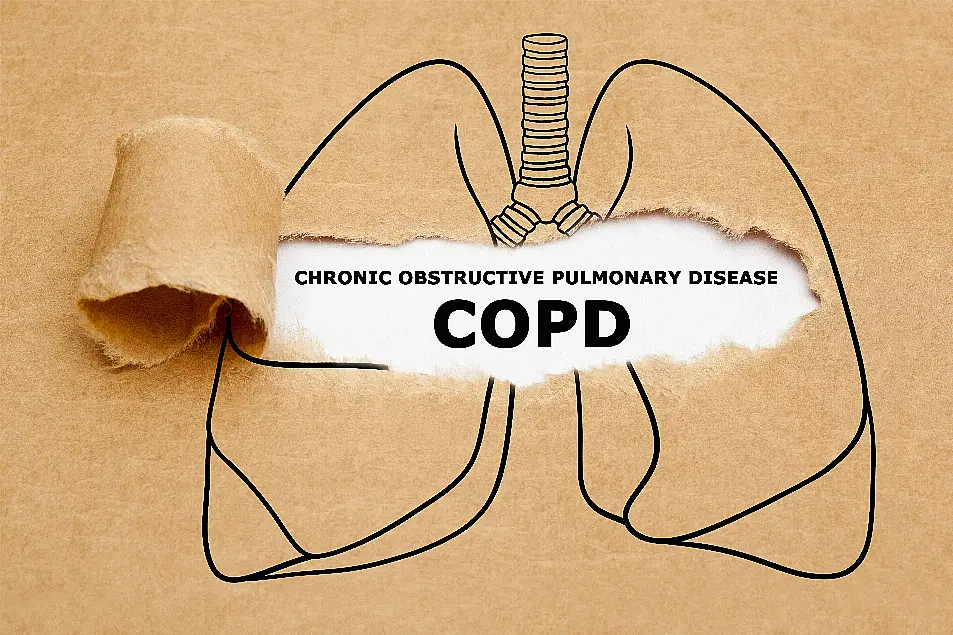The arrival of snow signifies that winter has well and truly arrived, but the freezing temperatures that accompany it are often a source of worry for people with lung conditions.
People with respiratory diseases, such as chronic obstructive pulmonary disease (COPD) or severe asthma, can be particularly susceptible to the effects of cold weather, finding themselves shorter of breath and coughing more than usual.
“There are 1.7 million people living with COPD in the UK, with a further 600,000 showing symptoms of the disease but struggling to get a diagnosis,” highlights Dr Andy Whittamore, GP and clinical lead at Asthma + Lung UK. “Recent survey data shows that less than 1 in 10 people with a diagnosis are getting the right levels of care.”
But what is COPD? And can it be treated?
What is COPD?

“Chronic obstructive pulmonary disease is an umbrella term used to describe a group of chronic lung conditions that obstruct airflow and make breathing more difficult,” explains Dr Raj Chaggar, GP at Nuffield Health Leeds Hospital.
These include chronic bronchitis and emphysema.
“Chronic bronchitis is characterised by inflammation of the airways, leading to persistent coughing and excessive mucus production,” says Chaggar. “Whereas emphysema involves progressive damage to the air sacs (alveoli) and reducing overall lung function.”
Many people think that asthma and COPD are the same thing, but that is not the case.
“Whilst both are considered [to be] lung disease, there are several differences,” clarifies Chaggar. “Asthma commonly begins in childhood and is often associated with allergies, whereas COPD typically presents in the over 50s and is associated with smoking.”
What causes it?
“The majority of COPD cases are linked to smoking, as it irritates and inflames the lungs, leading to scarring, damage to the air sacs and reduced lung elasticity,” explains Chaggar. “Even second-hand smoke can contribute to the disease.”
However, other factors such as repeated exposure to dust, fumes and industrial chemicals can also raise someone’s risk of developing the illness.
“Long-term exposure to air pollution or occupational hazards like dust and chemical fumes can also damage the lungs and increase the risk of COPD,” says Chaggar. “In the developing world, indoor pollutants, such as smoke from cooking or heating fuels are another common trigger.”
Chest problems in childhood and genetics can heighten people’s risk.
“Repeated respiratory infections, especially in childhood, may damage lung tissue over time and contribute to the development of COPD,” adds Chaggar. “A rare genetic condition, Alpha-1 Antitrypsin Deficiency can also predispose individuals to the disease.”
What are some common symptoms?

Some common early symptoms include breathlessness, wheezing, a chronic cough and frequent episodes of winter infections.
“A chronic cough is often the first symptom which, over time, becomes more persistent,” notes Chaggar. “As COPD progresses, other symptoms may present including fatigue, weight loss, ankle swelling and mental health issues including anxiety and depression.”
Can it be treated?

COPD can’t be cured, so treatment focuses on easing symptoms, preventing complications and maintaining lung function.
“Although COPD is a chronic condition, if caught early enough, lung damage can be slowed down and it is usually possible to manage the symptoms with the help of inhalers,” says Whittamore.
Pulmonary rehabilitation is also an option which can help people with respiratory conditions improve their ability to do everyday tasks.
“For those that are eligible, pulmonary rehabilitation, a breathing and exercise programme specifically designed for people with lung disease, can be quite a game-changer,” highlights Whittamore. “It can get more people on track with understanding their condition and beating their breathlessness.”
Is there anything we can do to prevent it?
Stop smoking
“Nine out of ten people diagnosed with the illness have a history of smoking, so the best thing anyone can do to protect themselves from the illness is to give up smoking as soon as possible,” stresses Whittamore.
Minimise exposure to air pollutants
“Minimise exposure to air pollutants by using appropriate ventilation when cooking or wearing appropriate protective gear to reduce exposure to dust, fumes and chemicals,” advises Chaggar.
Get vaccinated

“Staying up to date with vaccinations including influenza and pneumococcal to reduce the risk of infections that could cause lung damage,” highlights Chaggar.
Make healthy lifestyle choices
“Regular exercise helps strengthen the respiratory system and eating a healthy diet supports the body’s immune system,” notes Chaggar.







